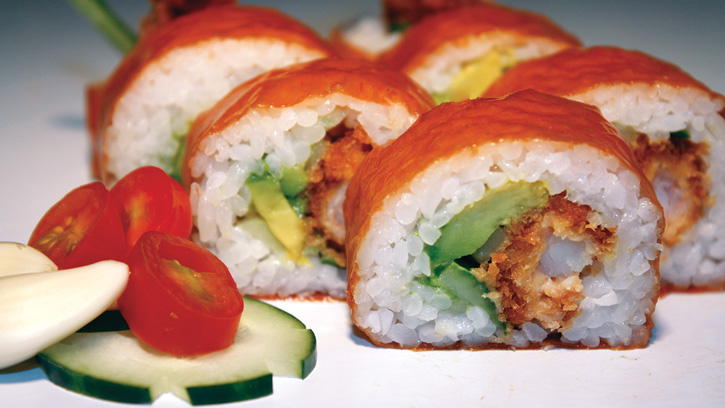Consumers Catch the Seafood Wave
CONSUMER TRENDS
Americans are trying to eat healthier, and consuming more seafood is part of their plan. According to the 2021 Food & Health Survey from the International Food Information Council (IFIC), one-quarter of consumers are eating more fish/shellfish than they did one year ago.
The fresh seafood department continues to post the largest grocery dollar gains across U.S. multi-outlet markets*—up 18.9% versus a year ago as of July 11, 2021, and up 30.8% versus two years ago, per IRI. Frozen seafood sales jumped 19.8% for the year ended June 13, 2021. Sales of shelf-stable seafood grew 21.3% last year.
One-third (36%) of adults are eating more seafood in place of meat, according to Technomic’s 2021 Center of the Plate: Seafood & Vegetarian Consumer Trend Report. Two-thirds (67%) are looking for more recipes and new products to help them do so, per Mintel’s 2021 Fish and Shellfish—U.S. report.
With six in 10 U.S. households still preparing all of their meals for household members at home and 20%–25% of workers expected to work part-time at home beyond 2021, there is an unprecedented opportunity to further ingrain seafood into everyday eating habits.
Consumption Patterns
Three-quarters of consumers eat seafood at home or away from home at least once a month, and 46% have it at least weekly; only 12% say they never eat seafood, according to Technomic.
Frequent seafood eaters (the 32% who eat seafood two or more times weekly) are most likely to be male, upper income ($100,000 and up), college educated, have kids at home, and live in coastal states; 50% are millennials. Only 44% of Gen Zers eat seafood, per the 2021 Power of Seafood report from FMI—The Food Industry Association.
Shrimp, followed by salmon, tuna, tilapia, Alaskan pollock, pangasius, cod, catfish, crab, and clams are the most consumed seafood in the United States, according to the National Fisheries Institute.
One-quarter of Gen Z consumers and millennials have upped their seafood cooking skills since the pandemic, according to FMI. One-third of seafood preparers are now using new spices, sauces, and flavors; 28% are trying additional cooking methods, such as grilling; 26% are using different types of seafood; 19% are trying restaurant-style recipes; and 18% are experimenting with new appliances, such as air fryers, FMI reports. Louisiana Fish Fry Products has a lemon pepper seasoned coating mix specifically created for use in air fryers. The company’s lineup also includes a fish taco sauce.
One-quarter of seafood buyers want more preseasoned/marinated options, breaded options with healthier coatings, and more international flavors, per Mintel. Authentic Asian flavors, hot/spicy, sweet heat, and American regional flavors are the hot seafood flavors at retail.
Morey’s Fine Fish & Seafood offers mahi mahi with a tropical pineapple mango marinade, and Aldi’s Fremont Fish Market brand includes a Nashville Hot Shrimp SKU.
Almost half of seafood eaters have subscribed to a meal kit service; one-third have bought a kit in-store, per FMI. Hancock Gourmet Lobster Co.’s Main Shore Dinner for 2 kit was named the best new specialty product of the year at the 2021 Fancy Food Show.
With relatively few seafood options available to shoppers, the $10.6 billion frozen dinner/entrée category is a missed opportunity, per IRI.
Menu Surfing
Sushi, shrimp tempura, and crab rangoon are among the 15 dishes that diners most want to order when eating away from home, per Datassential’s MenuTrend. Fish tacos top the list of trending seafood dishes overall.
With one-quarter of adults ordering more fish/shellfish from restaurants for takeout/delivery, per Datassential, maintaining optimal quality with preparations and innovative packaging that help seafood travel well will be essential to growing takeout sales.
Yellowtail/red snapper, mackerel, grouper, redfish, Dover sole, and anchovies are the fish getting attention in trendy restaurants and specialty grocers, along with squid, surf clams, oysters, octopus, and mussels, according to Datassential. Eel, branzino, yellowfin tuna, black cod, sea urchins, and snow crabs are among the up-and-coming species.
Red Lobster’s “seriously big fish” Crispy Cod Sandwich and regional specialties like Friendly’s New England Lobster Rolls are among the new menu offerings.
One-quarter of consumers say they’re very likely to try plant-based seafood, and 22% say they are somewhat likely to do so, per FMI. Long John Silver’s is testing plant-based Good Catch Fish-Free Fillets and Crab-Free Cakes at five locations. CLO-CLO Vegan Foods’ new Red Curry Shrimp Bowl is among the first frozen meals to include plant-based shrimp.
Four in 10 seafood eaters make a significant effort to choose sustainable seafood, per FMI. While wild-caught remains most important, preference for farm-raised is on the rise (36% for the former versus 29% for the latter). Sales of farmed seafood grew 18.9% for the year ended May 16, 2021, per IRI.
Full Speed Ahead
To continue growing the seafood market, increasing seafood consumption at dayparts other than dinner is essential. Only one-third (36%) of consumers currently eat seafood at lunch, 6% have it for breakfast, and just 5% choose it as a snack, per Technomic. Meanwhile, IRI reports that as of this spring, dollar sales of retail foods positioned for breakfast are up 15.1% versus two years ago, sales of products for lunch have climbed by 11.7%, and snack product sales are up 9.5%.
Freshé’s all-natural, pocket-sized Gourmet Tuna Meals in exotic global flavors like Sicilian Caponata include wild-caught tuna, butternut squash, fire-roasted vegetables, shaved almonds, and fresh herbs and are billed as “protein-based meals that go anywhere.”
Foods that cater to at-home social occasions grew 8% for the year ended May 16, 2021. Frozen appetizers/snack rolls are now the fifth-largest frozen food category, per IRI.
AppetizersUSA’s Lobster Empanadas and Beaver Street Fisheries’ new Creamy Rangoon Shrimp Dip will upgrade any get-together.
Capitalizing on the health benefits of seafood makes marketing sense. For the 42% of adults who gained an average of 29 pounds during the pandemic, per an American Psychological Association survey, positioning seafood as a lower-calorie option is a savvy strategy. Sea Cuisine’s line of healthy Smart Ingredients seafood, such as Mediterranean Crusted Wild Alaska Salmon, highlights protein content, omega-3s, wild-caught, and no preservatives on the front label.
Superfood positioning has the potential to attract millennials and Gen Zers. Salmon is the 10th most trendy superfood for 2021, per Pollock Communications’ What’s Trending in Nutrition report.
Of course, seafood marketers must also recognize the reality of concerns about allergens and mercury levels. Sixteen percent of adults say they have a seafood/shellfish allergy, up from 10% in 2018, per Datassential. Half are concerned about mercury levels in tuna, per FMI.
*Multi-outlet includes food/grocery, drug, mass merchandisers, Walmart, club stores, dollar stores, and military commissaries.




